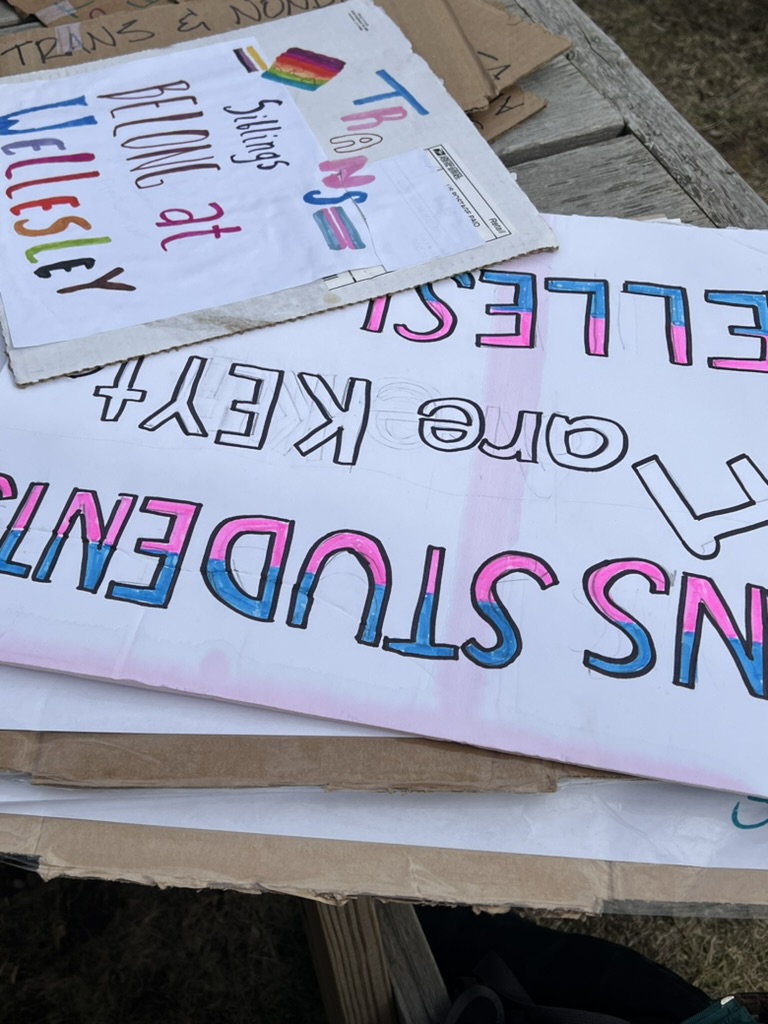By EMILY WILLIAMS ’16
Staff Writer

Assistant Photography Editor
Wellesley has a high number of student organizations relative to comparably-sized institutions, based on information members of College Government (CG) gathered at the annual Seven Sisters Conference held at Vassar College this fall.
As of this semester, Wellesley has 161 constituted student organizations with a student body of approximately 2,300 students.
Bryn Mawr College has nearly 1,700 students and Vassar College has nearly 2,400 students. Both Bryn Mawr and Vassar offer approximately 100 student organizations while Mount Holyoke offers between 100 and 150 organizations to nearly 2,300 students. Smith College has 2,600 students and just over 100 organizations.
While the high number of organizations at Wellesley relative to the number at these schools may be due to the way CG constitutes organizations, CG Vice President Celine Hu ’14 also believes it is due to the culture at Wellesley.
“At Wellesley, we have a very self starting attitude. If you see something that you want to change, many people will actively go for it,” Hu said. “I really just think it has to do with our very active student body.”
From 2009 to 2010, CG froze the application process for constitutionalization due to a lack of funding. Since then, Hu estimates that two to four organizations have been constituted per semester. While this increases the variety of events on campus, Hu acknowledged that the high number of organizations can cause problems.
“The student activities fee is a set number, so the pool of money these organizations are applying for isn’t necessarily growing at the same pace as the number of organizations,” Hu said.
Student organizations submitted 120 applications for the Student Organizations Funding Committee Funding deadline on Oct. 18, competing for an available funding pool of $129,689.
“The problem is less the number of orgs, and more the number of events,” Student Bursar Maria Brusco ’14 said.
According to Brusco, organizations that hold large events have fewer funding problems than smaller organizations such as club sports teams and other competitive organizations.
For the Oct. 18 deadline, funding requests for events that had an expected attendance of 500 students or more each received an average of 95 percent of their requested amount of funds. On the other hand, sports teams and other competitive organizations each received an average of 52.4 percent of the funding they requested.
The large number of applications for funding affects the maximum amount of money CG spends on each student predicted to attend events.
The number of organizations also leads to a space shortage.
“This year there were particularly some issues with spaces having to do with performances. Academic departments get priority over space requests,” Hu said.
Slater International ran into problems with booking Alumnae Ballroom for its annual culture show this year.
“We had booked Alumnae Hall in late April for the culture show. The show happens during the last two weeks of October every year, so we decided to go ahead and book the space,” Mia Guild ’16, Slater International’s culture chair, said.
In late August, Slater was informed that it would not be able to host the culture show in Alumnae Ballroom due to a theater performance. Slater had to change the venue of the culture show to Jewett Auditorium, a space smaller than the ballroom.
According to Eric Gudmundson, assistant director of student involvement, the Office of Student Involvement is constantly overwhelmed with event requests.
“Coming from two other institutions, this being the smallest that I’ve worked at, [Wellesley] rivals other larger schools in the amount of organizations,” Gudmundson said.
There is high competition for spaces such as Alumnae Ballroom and Tishman Commons, especially during the weekend. One organization had to postpone their event one month later than its initially planned date due to the popularity of Alumnae and Tishman.
“The problem is we have a lot of space, but for large parties and events, you really have Tishman or Alumnae Ballroom. If you’re going to have 300 people in a space, those are really your only options,” Gudmundson said.
When event scheduling conflicts, the Office of Student Involvement must help organizations find other suitable spaces and times to host their events.
Gudmundson and Hu both commented that creativity and collaboration between organizations is necessary to solve these over-programming problems.
“If we had say six organizations collaborating on one single event, that would reduce the restraints that we have,” Hu suggested.
CG is currently working to find a solution to these problems caused by over-programming at Wellesley.
“We are definitely cognizant of this issue, and we’ve been brainstorming with the administration as well, but so far we have nothing concrete to implement yet,” Hu said.





